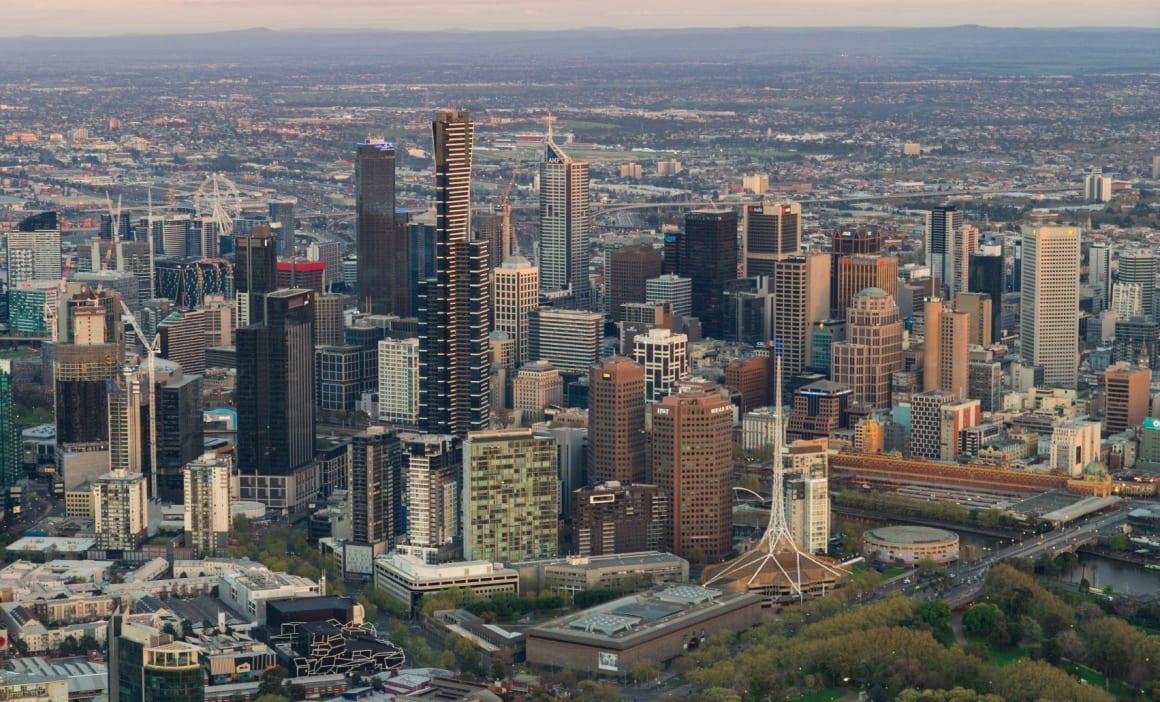Melbourne attractive to both investors and owner occupiers: John McGrath

Melbourne’s appeal as an investment hot spot and an alternative for Sydney owner occupiers has been rising, according to John McGrath, especially with many Sydneysiders being priced out of their home market.
The Victorian capital’s comparatively affordable property, a strong economy, top schools and the tag of one of the most ‘liveable cities’ are all fuelling Melbourne’s record population growth.
And there is still room for future property price growth despite exceptional capital gains over the boom, says McGrath in a recent Switzer blog.
“Taking a two-decade view, Melbourne’s annual compound growth rate for house prices is 8.4%, a whisker ahead of Sydney on 8.2%,” he writes.
And Melbourne is far more affordable than Sydney today, with the median house price more than $200,000 cheaper, according to CoreLogic figures.
In the 12 months to June 2017, Melbourne house prices rose by 9.8% to a median $675,000 while apartment prices rose by 2.0% to $500,000.
“Outstanding value for money is helping Victoria remain the fastest growing residential population in Australia, with record numbers of new interstate and overseas residents choosing Melbourne as their home and more investors seeing better potential here,” says McGrath.
Melbourne is also turning a favourite for investors for its lower price base, strong population growth and buoyant economic landscape, with a state budget surplus of $1.2 billion forecast for FY2018 and $22 billion flagged for infrastructure spending.
Good job prospects and top schools are a big factor in Melbourne’s population and property price growth.
Jobs in Melbourne grew by 94,100 in the year to July 2017 – more than anywhere else in Australia; and the city has been ranked the world’s most liveable for the seventh consecutive year.
Top public education campuses, including two in the Top 100 World University Rankings, helped attract 65,007 migrants in FY16 alone.
Many Melburnian families are willing to upsize or even downsize their homes in order to enter top secondary school catchment zones in suburbs like Balwyn, Mount Waverley and McKinnon.
In these suburbs, housing stock is already in short supply due with empty nesters and retirees opting to stay put in family homes, resulting in fierce competition for limited listings, price rises and often price ripples to adjacent suburbs, says McGrath.
For example, median house prices in Bulleen rose 13.9% in FY17 as neighbouring Balwyn North became too expensive. Buyers are also finding better value in Cheltenham over next door neighbour Black Rock, he adds.
Meanwhile, stamp duty exemptions for first home buyers for properties up to $600,000 and concessions up to $750,000 are encouraging them back into the market.
FHB hot spots include Hoppers Crossing and Werribee in the west, Craigieburn in the north and Pakenham and Clyde in the outer south east. The city fringe is also attractive to FHBs, with 17 new suburbs offering 100,000 rezoned lots to be released by the end of 2018.
At the same time, Melbourne’s trophy homes command record prices. The city’s record house price reached $40 million in August 2017 when the Toorak home of Mirvac director, Marina Darling sold to a Chinese buyer, smashing the previous record of $26.25 million set in December 2016.
Melbourne CBD is now the most densely populated region of Australia with 37,754 residents living within 2.4 square kilometres. Chinese buyers, local downsizers and students flock to the CBD.
An oversupply of new apartments is softening prices, but also creating buying opportunities for those with a long-term view.
“We see an exciting future for investors who can expect strong long-term capital gains, as well as owner occupiers who can also expect great growth as they continue to enjoy living in one of the most desirable cities on the planet,” he concludes.